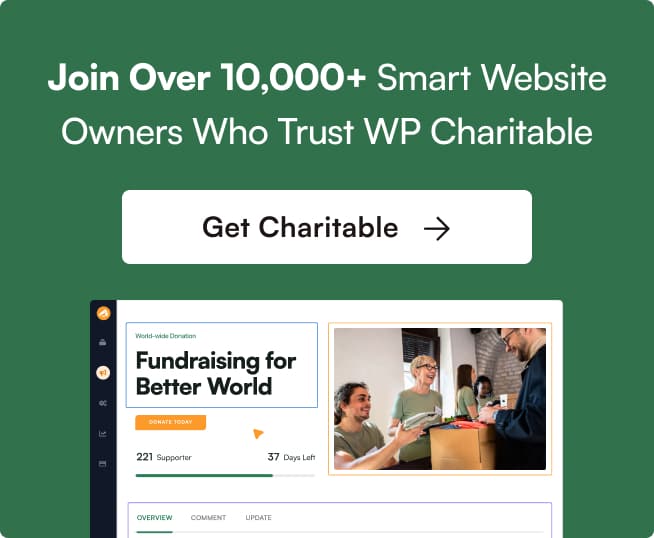Like so many other organizations, the parameters of COVID-19 have had a huge knock-on impact around the way non-profits operate and raise money. A huge number of scheduled events and fundraisers have been deferred or simply cancelled for now, and many of us are working remotely to respect social distancing measures.
But as we start to slowly move towards a “new normal”, many are concerned about planning for the new dynamic, both in terms of charitable support and the way non-profits will operate on a wider scale.
Below, we’ve listed eight non-profit challenges (and opportunities!) we’ll face in a post-COVID world — from adjusting social missions to shifting to new work patterns.
Impacts on your social mission
Apart from impacting your ability to fundraise, carry out events and deliver programs, your whole social mission might be affected by the impact of COVID-19. Many organizations are shifting the way they deliver their services by creating new partnerships to expand their reach and impact, or using this moment to call for systemic change.
For example, Oxfam America, whose purpose is to help create lasting solutions to the injustice of poverty, is organizing efforts to increase the delivery of clean water and sanitary supplies to refugees and those living in higher-risk environments. In the UK, The Trussell Trust, whose mission is to prevent UK hunger with over 1,200 food bank centres in the network, is providing emergency support to people who can source food particularly during COVID-19 and beyond.

Mental health charities such as Samaritans and Mind have ensured their mission stays true to helping people in need during the pandemic, launching a specialized service for emergency and key workers suffering from poor mental health at this time.
So, has your non-profit been helping people in the wake of the pandemic? How has this led to more positive change, and in what context does this affect your overall social mission for the greater good?
It’s a good idea to keep your team members and audience engaged by framing the value of your work in the current climate, while also showing your work and mission beyond that. Tell people how you’re helping, why your organization matters now and where your donations are going in your adapted social mission.
Ability to fundraise
Event fundraising is critical to many non-profits, and with the forced hiatus that we’ve seen taken place across the board, it’s directly affected donations. In a post-COVID world, social distancing will likely be in place, meaning we might not see traditional event fundraising going back to normal for a long time. The concern for non-profits is that this gap in fundraising will not be made up and leave a big hole in financial forecasts. But even where you might not be able to host in-person events, it doesn’t necessarily mean you have to cancel all your fundraising drivers.
Online fundraising is a precedent that was already starting to take hold before the COVID crisis — in fact, online fundraising revenues in the U.S. alone rose 10% on a year-over-year basis in 2019, up from 1% year-over-year growth in 2018. It makes sense to continue to leverage technology that doesn’t require people to be in physical close contact. If you’re able to take some of your fundraising drivers to virtual avenues – such as raising money through online auctions or offering classes – then you’ll be able to adapt your fundraising efforts to the new realities.
A bigger focus on peer-to-peer fundraising
Especially when there’s less of a focus on event fundraisers as described above, non-profits can embrace a different challenge: peer-to-peer fundraising!
This is a specific style of fundraising where you and a team can empower your organization’s cause collectively by encouraging respective networks to donate. You can set up fun challenges to inspire people to take part, or use a theme like #GivingTuesday to keep a consistent thread going in your campaign.
Here’s a bit more on how it works:
- You decide on your fundraising objective and, using our platform, decide which kind of peer to peer campaign you’d like to run – whether that’s time-based or ongoing. Time-based campaigns can take place over a specific period of time and usually coincide with a big kick-off event, whereas rolling campaigns can continue for as long as it takes to reach a particular fundraising goal.
- Your charity recruits volunteers who commit to setting up their own pages with Charitable Ambassadors, asking people in their network to become involved and share the campaign with their own friends. The Charitable Ambassadors page allows you to scale and customize your page to reflect fundraising needs, and use our support for tips and ideas on going even further.
- You use the shared fundraising page to check in on goals and share tips until you reach your goal.
Since peer-to-peer fundraising can be taken on virtually in a number of different ways, it’s a great avenue to pour your efforts into and ramp up fundraising initiatives. Best of all, it can be spread easily across social media channels, where friends, family and colleagues are consuming social feeds.
For example, Pancreatic Cancer Action Network, which usually does a sponsored walk, decided to transition to virtual walks and used virtual peer-to-peer fundraising to engage its supporters. They mobilized this initiative across social media to get as many people as they could involved.

St Baldrick’s Foundation, which fights cancer in children, traditionally held a huge event fundraiser in March. This year, they decided to host a head-shaving fundraiser solicited through peer networks. They moved to video-streaming platforms like Zoom and Twitch to open up online streaming, watching others who were taking part and raise money live.
Impact on staff wellbeing and infrastructure
Non-profits, like many other kinds of organizations, have seen the pandemic take its toll on their staff and overall workplace momentum. All of us have been sent home to work remotely, which greatly impacts working relationships, especially between staff members and the people they serve. On the other side, many non-profits have had to lay off staff or reduce their hours, which means others have had to pick up the slack.

Team members working for non-profits will have to learn how to connect with each other in a different way, whether people choose to continue working remotely or go back to the office once restrictions are eased. That means talking more on virtual calls and getting used to the “new normal” — whether that’s practising social distancing in the office, or getting used to the new types of virtual fundraisers that might take precedent over traditional fundraising.
This leads onto another challenge: hiring the right talent once the time comes to building the team back up. Those who want to work in charitable causes are usually very dedicated to the mission they serve, but with fewer resources, it can be harder to attract great talent. It’s vital to provide an engaging work experience that allows your new team members to focus on the reason they love their work — your mission.
Changing priorities among supporter base
Imposed national lockdowns have affected pretty much all of our lives. Some of us have had a period of reflection while working from home, while others have experienced loss and increased levels of stress – with many experiencing job redundancies.
This means people who you usually rely on for support may have shifted their own priorities to focus more on themselves and their families. But in a time where people are feeling afraid, anxious and overwhelmed, it’s also a good time to remind people how giving or volunteering can make them feel good again. Show how they can help and be part of something that gives back to communities – but be careful about how you construct your messaging.
In conclusion…
Broadly speaking, non-profits are seen as purpose-driven organizations with the public having some ownership in their work, since they drive the ability to carry out their missions through donations. Their survival is imperative, as they often work with and employ some of the world’s most vulnerable people.
Even though non-profits are facing huge challenges around how to operate and raise money when factors like social distancing and working from home are in place, it doesn’t mean you have to halt your efforts altogether. We have tons of ideas to get your non-profit back to fundraising and showing supporters – historic or new – the value of what you’re doing. Despite the pandemic, now is a time where new sets of priorities are being opened up to adapt to changing demands and expectations, which can help you position yourself for success in a post-COVID environment.
Enjoyed this article? Read this next:



Leave a Reply